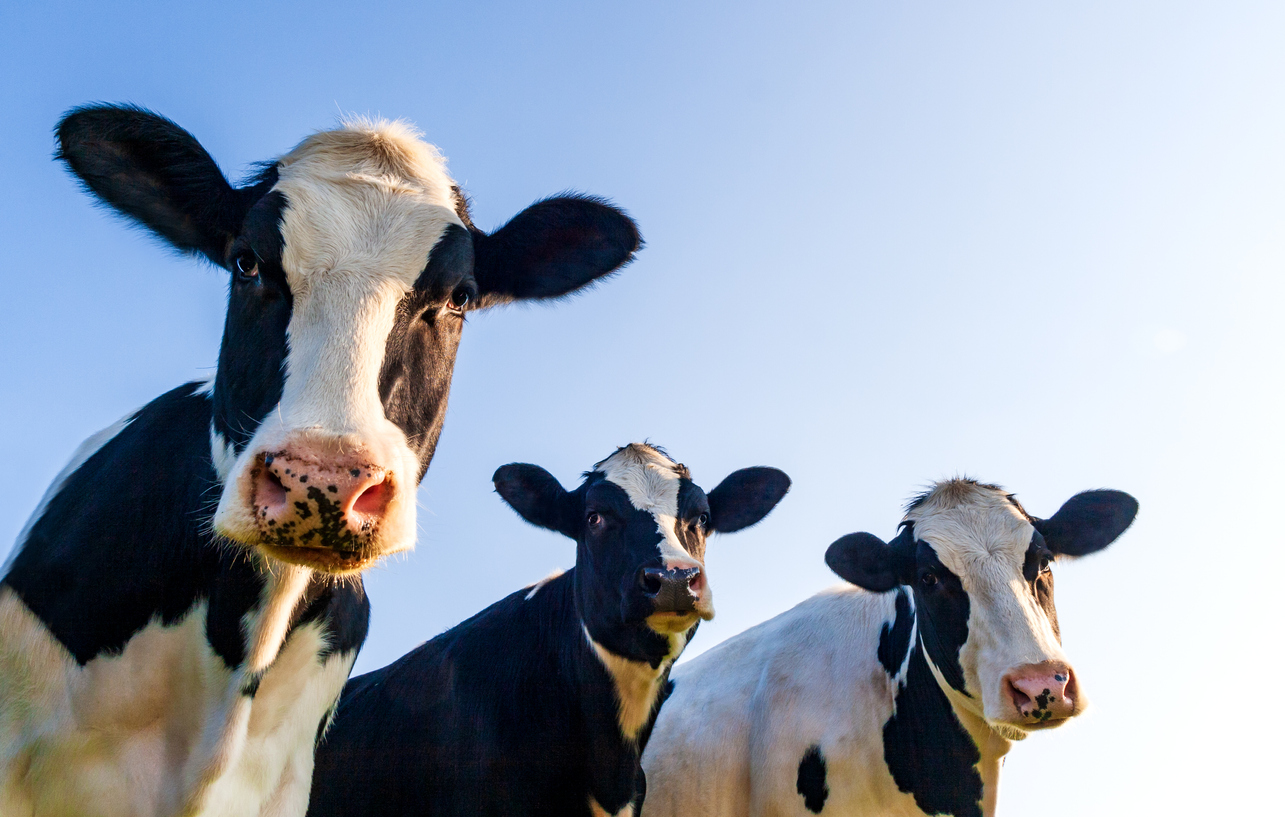Organic food sales in the United States rose from $11 billion in 2004 to $49 billion in 2018. This is triple the annual growth rate for all food sales.1
The organic trend
The demand for organic foods is so high that a 2017 Washington Post investigation found that millions of pounds of soybeans from Ukraine were sold into the U.S. as organic when they were actually conventionally grown.2 Organic foods are now not only found in niche stores like Whole Foods and farmers’ markets but even mainstream stores like Walmart and Costco that pride themselves on affordability and accessibility.
Walking through the aisles at any one of these stores, one sees green stickers that say “natural,” “humane,” “USDA Organic,” “CCOF Organic.” How did we end up with so many labels and what do they mean?
Connotations of “organic” food
The label, “Organic,” has many connotations and impacts everyone from farmers to grocery suppliers to consumers. For some, “Organic” is shorthand for “healthy.” It lures them like an aphrodisiac.
For others, “Organic” is synonymous with “expensive.” It sends cost-conscious consumers a message to steer clear and deters farmers from applying for certification.
Still, for others, “Organic” is a lifestyle and philosophy. To understand the true meaning of the “Organic” food label, we must first understand its origin.
The origin of “organic” foods
Post World War II, war-torn countries were experiencing dire food shortages. They were trying to figure out a way to make as much food as possible, as fast as possible.3 Thus, chemical companies came up with an insecticide called DDT.
The use of DDT dramatically boosted crop yields and spurred the popularity of synthetic pesticides and fertilizers.(3) However, it also prompted a counterculture movement promoting organic agriculture.
Sir Albert Howard’s An Agricultural Testament detailed sustainable farming and encouraged eating whole foods.(3) J.I. Rodale founded the research institute, Soil and Health Foundation.(3) Most notably, Rachel Carson published Silent Spring, which revealed the horrid environmental and health effects of pesticides.(3)
Defining “organic” food
In its infancy, the term, “Organic,” signified vague, big picture ideals like family health and environmental stewardship. The current definition of “Organic” still signifies these ideals but details specific criteria to meet these ideals.
In 2002, the USDA developed National Organic Standards (NOS).4 According to the NOS, “Organic” means that a food was not produced with some pesticides, synthetic fertilizers, genetic modification, bioengineering, or ionizing radiation and has been certified by a USDA-authorized inspector.(4)
Organic foods are actually not free of all pesticides.(4) Organic foods may contain traces of chemicals from wind and water drift. The National Organic Program created the National List of Allowed and Prohibited Substances. It allows some synthetic pesticides, such as insecticidal soap, and prohibits some natural substances, such as ash.(4)
Organic meat, poultry, and eggs do not have antibiotics or growth hormones.4 Labels like “Natural,” “Humane,” “Local,” and “Sustainable” or “Pesticide Free” and “No Spray” are not federally regulated.(4)
Understanding “organic” food labels
The three main organic labels are as follows:
-
-
- 100% Organic
- Organic
- Made with Organic Ingredients
-
With any of the three labels, the organic ingredients must be indicated.
-
100% organic
100% organic is the strictest, with all the ingredients in that food being organic.(4) These foods may include the “USDA Organic” stamp and/or a claim about being 100% organic.
-
Organic
The most common label, “Organic,” means that 95-100% of the ingredients in that food are organic.(4) Again, these foods may include the “USDA Organic” stamp and/or a claim about being organic. The 5% could be non-organic ingredients, such as baking soda, citric acid, and pectin.(4)
Take Nature’s Path Organic Heritage Flakes cereal, commonly found in Whole Foods. Ingredients include wheat flour, cane sugar, oat flour, spelt flour, barley flour, quinoa, sea salt, and honey. The only ingredient that is not organic is sea salt. Because 95-100% of the ingredients in the cereal are organic, the cereal is considered organic.
-
Made with organic Ingredients
Lastly, “Made with Organic Ingredients” means that at least 70% of the ingredients are organic.(4) These foods do not receive USDA Organic certification. They can only write “Made with Organic ingredients” and apply for state certifications, such as California Certified Organic Farms (CCOF).(4)
Related Articles:
How to Make Healthy Eating Easy
Can You Have Your Carbs and Eat Healthy, Too?
Controversies around “organic” food
Even with these added criteria, the term, “Organic,” can still be vague and confusing. Animal welfare requirements, such as the definition of “outdoor space,” are ambiguous.(3) There are also many controversies surrounding the environmental, economic, and health benefits of organic foods.
-
Environmental controversies:
Organic farming protects wildlife, preserves soil using nitrogen-fixing plants, and conserves water.(4)
Organic farming prevents chemical runoff, however, composting still releases nitrates into groundwater. Organically treated soil absorbs more carbon from the air, helping to mitigate climate change. But the nitrates that composting releases contribute to the generation of greenhouse gases.5
The USDA imports organic foods from across the world.6 The immense fuel needed to transport these foods may undermine any environmental benefits gained from organic farming. (6)
-
Economic controversies:
Organic foods are more expensive than conventional foods. On the flip side, there are hidden costs for the testing and regulating of pesticides that taxpayers are paying.(4) Because of this, the sticker price of conventional foods does not reflect its true cost.
However, getting certified as USDA Organic is still very expensive for farmers. Many farmers, especially those who sell food at local farmer’s markets, may practice organic farming. However, they may not have enough money to get certified.(3) Therefore, not having the “USDA Organic” stamp does not necessarily mean that the food is not organic.
Other posts by this author: The Rise of Non-dairy Milk – Are Cows Getting the Boot?
-
Health controversies
Organic foods have fewer pesticides and antibiotics. Studies have shown that antibiotics from food contribute to antibiotic resistance in humans.7
Exposure to pesticides can lead to ADHD, autism, lower cognitive ability, and cancer. But the level of pesticides on conventional foods falls within the safe limits set by federal regulations.8
A 2012 meta-study published in Annals of Internal Medicine found little health benefits from organic foods.9 The studies that show that organic foods have more nutrients, such as vitamins and minerals, have many problems, including the following:(8)
-
-
- Firstly, the difference in the levels of the nutrients is so small that it is unlikely to have an impact on our overall nutrition.(8)
- Secondly, there are many confounding variables. For example, a rare ten-year study comparing plots of organic and conventionally grown tomatoes found that the organic tomatoes had higher antioxidants. However, after Stanford researchers zoomed out and compared this study with studies on other crops, they found no pattern.10 This is because foods vary in their nutritional quality whether they are organic or not. It is nearly impossible to isolate the effects of organic farming on any given food or the effects of organic foods on an individual because there are so many confounding variables. In the tomato study, soil type, moisture level, tomato variety, and a host of other factors could have affected the final antioxidant level in the tomato.
-
What can you do?
The term, “Organic,” was based on ideals of family health and environmental stewardship. However, all of the different organic labels and the controversies around the term, “Organic” may not be the ideal.
Growing and buying organic foods is expensive. Organic farming has environmental benefits. But the environmental impacts of transporting them to market offset these benefits. Therefore, it may not be the answer to a sustainable global food system.(6)
There is little evidence about the health benefits of organic food.(9) In fact, organic foods are not always healthy. They can have just as much if not more salt, fat, and sugar. Unfortunately, this is a difference that consumers fixated on buying organic products could overlook.
Therefore, I urge you not to judge a food simply based on whether or not it is organic. I urge you to read the nutrition facts label on food. When possible, I urge you to speak to farmers to learn about organic agriculture in practice and to hear their side of the story.
Scientists are currently measuring the nutrient levels in various crops and breeding varieties that would yield a more nutritious product.11 This may eventually lead to federally regulated labels that would be more useful for identifying nutritious food.
Dabbling in organic foods
In the meantime, if you like the idea of organic foods but are not ready to buy all organic foods, you can pick and choose:
If you are interested in lowering pesticides in your food, choose organic for the following foods that have thinner skin and therefore, more pesticide residue.(8) These foods are called the Dirty Dozen, published each year by the Environmental Working Group (EWG)(8):
-
-
- Strawberries
- Kale
- Spinach
- Nectarines
- Grapes
- Apples
- Cherries
- Peaches
- Tomatoes
- Pears
- Potatoes
- Celery
-
If you are interested in promoting organic agriculture, choose organic for the following foods that take up more land(8):
-
-
-
Wheat
-
Corn
-
Grains
-
Beef
-
Dairy
-
-
If you are interested in fewer antibiotics and hormones and human-animal treatment, choose organic for animal-based products, such as(8):
-
-
- Milk
- Eggs
- Cheese
- Poultry
-
The bottom line if you’re thinking of buying organic foods
You need not feel compelled to buy organic. However, I urge you to read food labels and not only the organic ones. If anything, I hope the origin story, ambiguity, and controversies surrounding the term makes you a little more curious about your food.
References
- Organic Trade Association. 2017. Organic industry survey. https://ota.com/organic-market-overview/organic-industry-survey
- Whoriskey, P. 2017. The labels said ‘organic.’ But these massive imports of corn and soybeans weren’t. The Washington Post. https://www.washingtonpost.com/business/economy/the-labels-said-organic-but-these-massive-imports-of-corn-and-soybeans-werentc
- Raoul A. 2020. Organic farming. Encyclopaedia Britannica. https://www.britannica.com/topic/organic-farming
- USDA, Agricultural Marketing Service. National Organic Program. USDA oversight of organic products. https://www.ams.usda.gov/about-ams/programs-offices/national-organic-program
- Dahan, O., Babad, A., Lazarovitch, N., Russak E. E., Kurtzman, D. 2014. Nitrate leaching from intensive organic farms to groundwater. Hydrology and Earth System Sciences. 18:333-341. https://hess.copernicus.org/articles/18/333/2014/hess-18-333-2014.pdf
- USDA Agricultural Marketing Services. 2018. International Trade Partners. https://www.ams.usda.gov/services/organic-certification/international-trade
- Misiewicz, T., Shade, J. 2016. Organic food and farming as a tool to combat antibiotic resistance and protect public health. The Organic Center. https://www.organic-center.org/sites/default/files/project/2016/07/TOC_Report_AntibioticResistance_FINAL.pdf
- Harvard Health Publishing. 2015. Should you go organic? https://www.health.harvard.edu/staying-healthy/should-you-go-organic
- Smith-Spangler, C., Brandeau, M. L., Hunter, G. E., Bavinger, J. C., Pearson, M., Eschbach, P. J. et al. 2012. Are Organic Foods Safer or Healthier Than Conventional Alternatives? Annals of Internal Medicine 157(5): 348-366. https://www.acpjournals.org/doi/10.7326/0003-4819-157-5-201209040-00007
- Aubrey, A. 2008. Are organic tomatoes better? National Public Radio. https://www.npr.org/templates/story/story.php?storyId=90914182
- Aubrey, A., Charles, D. 2012. Why organic food may not be healthier for you. National Public Radio. https://www.npr.org/sections/thesalt/2012/09/04/160395259/why-organic-food-may-not-be-healthier-for-you
Swetha Tummala
Swetha Tummala is a first-year medical student at Boston University School of Medicine. She is a part of Boston University’s Seven-Year Liberal Arts/Medical Education Program.
Swetha is the student lead for the 5210 Nutrition and Fitness Program, which aims to combat obesity by teaching children healthy lifestyle habits. Each number in the 5210 Nutrition and Fitness Progam represents a different healthy habit. For example, part of the number 5 in 5210 stands for five fruits and vegetables daily. Swetha introduces children to USDA’s MyPlate and helps children make balanced meals out of toy food.
Swetha was Editor-In-Chief of her high school yearbook, for which she frequently wrote and edited articles. She has published scientific abstracts and papers related to obesity and liver disease in Digestive Disease Week and World Journal of Hepatology.
In her free time, Swetha loves to sing, bake, listen to podcasts about food and finance, and watch movies. She actively plays basketball with her younger brother.
Comments:
Leave a Reply
Comment will held for moderation











A fair assessment. I would be interested in an article that treats the claims of conventional and GMO farming with the same skepticism.